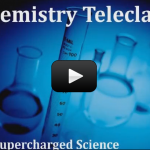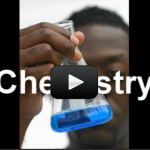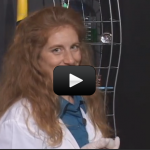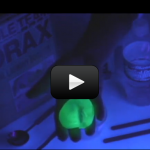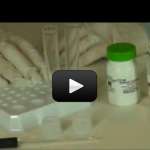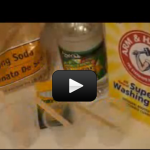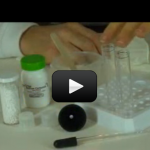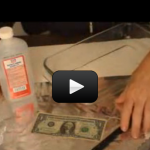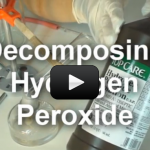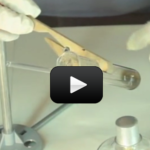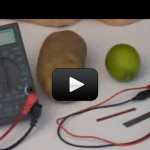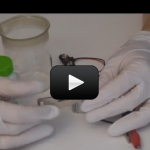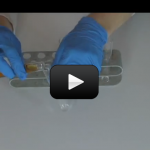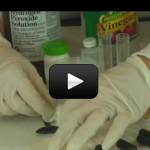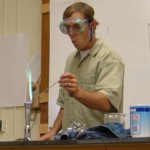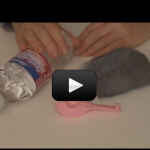Special Science Teleclass: Chemistry
This is a recording of a recent live teleclass I did with thousands of kids from all over the world. I’ve included it here so you can participate and learn, too! (Click here if you’re looking for the more recent version that also includes Chemical Engineering.) When you think of slime, do you imagine slugs, … Continue reading "Special Science Teleclass: Chemistry" |
How to Not Burn Your Eyeballs and Lose Your Fingers
Chemical Data & Safe Handling Information Sheet What do I really need to know first? First of all, the chemicals in this set should be stored out of reach of pets and children. Grab the chemicals right now and stuff them in a safe place where accidents can’t happen. Do this NOW! When you’re done … Continue reading "How to Not Burn Your Eyeballs and Lose Your Fingers" |
Bouncy Ball
This is one of those 'chemistry magic show' type of experiments to wow your friends and family. Here's the scoop: you take a cup of clear liquid, add it to another cup of clear liquid, stir for ten seconds, and you'll see a color change, a state change from liquid to solid, and you can … Continue reading "Bouncy Ball" |
Glowing Slime
When you think of slime, do you imagine slugs, snails, and puppy kisses? Or does the science fiction film The Blob come to mind? Any way you picture it, slime is definitely slippery, slithery, and just plain icky — and a perfect forum for learning real science. But which ingredients work in making a truly … Continue reading "Glowing Slime" |
Turning Water into Wine
Phenolphthalein is a weak, colorless acid that changes color when it touches acidic (turns orange) or basic (turns pink/fuchsia) substances. People used to take it as a laxative (not recommended today, as ingesting high amounts may cause cancer). Use gloves when handling this chemical, as your skin can absorb it on contact. I’ll show you … Continue reading "Turning Water into Wine" |
Turning Water into Ink
You can use this as real ink by using it BEFORE you combine them together like this: dip a toothpick into the first solution (sodium ferrocyanide solution) and with the tip write onto a sheet of paper. While the writing is drying, dip a piece of paper towel int other solution (ferric ammonium sulfate solution) … Continue reading "Turning Water into Ink" |
Hot Liquids and Cool Solids
Dissolving calcium chloride is highly exothermic, meaning that it gives off a lot of heat when mixed with water (the water can reach up to 140oF, so watch your hands!). The energy released comes from the bond energy of the calcium chloride atoms, and is actually electromagnetic energy. When you combine the calcium chloride and … Continue reading "Hot Liquids and Cool Solids" |
Elephant Toothpaste
I mixed up two different liquids (potassium iodide and a very strong solution of hydrogen peroxide) to get a foamy result at a live workshop I did recently. See what you think! Note: because of the toxic nature of this experiment, it’s best to leave this one to the experts. Nurses will put hydrogen peroxide … Continue reading "Elephant Toothpaste" |
What is Fire?
What state of matter is fire? Is it a liquid? I get that question a LOT, so let me clarify. The ancient scientists (Greek, Chinese… you name it) thought fire was a fundamental element. Earth, Air Water, and Fire (sometimes Space was added, and the Chinese actually omitted Air and substituted Wood and Metal instead) … Continue reading "What is Fire?" |
Decomposing Hydrogen Peroxide
This experiment below is for advanced students. If you’ve ever wondered why hydrogen peroxide comes in dark bottles, it’s because the liquid reacts with sunlight to decompose from H2O2 (hydrogen peroxide) into H2O (water) and O2 (oxygen). If you uncap the bottle and wait long enough, you’ll eventually get a container of water (although this … Continue reading "Decomposing Hydrogen Peroxide" |
Taking the Salt out of the Ocean
This experiment is for advanced students.Have you ever taken a gulp of the ocean? Seawater can be extremely salty! There are large quantities of salt dissolved into the water as it rolled across the land and into the sea. Drinking ocean water will actually make you thirstier (think of eating a lot of pretzels). So … Continue reading "Taking the Salt out of the Ocean" |
Fruit Battery
This experiment shows how a battery works using electrochemistry. The copper electrons are chemically reacting with the lemon juice, which is a weak acid, to form copper ions (cathode, or positive electrode) and bubbles of hydrogen. These copper ions interact with the zinc electrode (negative electrode, or anode) to form zinc ions. The difference in … Continue reading "Fruit Battery" |
Electroplating
If you don’t have equipment lying around for this experiment, wait until you complete Unit 10 (Electricity) and then come back to complete this experiment. It’s definitely worth it! Electroplating was first figured out by Michael Faraday. The copper dissolves and shoots over to the key and gets stuck as a thin layer onto the … Continue reading "Electroplating" |
Iodine Rainbow
This is the experiment that your audience will remember from your chemistry magic show. Here’s what happens – you call up six ‘helpers’ and hand each a seemingly empty test tube. Into each test tube, pour a little of the main gold-colored solution, say a few magic words, and their test tubes turn clear, black, … Continue reading "Iodine Rainbow" |
Iodine Clock Reaction
First discovered in 1886 by Hans Heinrich Landolt, the iodine clock reaction is one of the best classical chemical kinetics experiments. Here’s what to expect: Two clear solutions are mixed. At first there is no visible reaction, but after a short time, the liquid suddenly turns dark blue. Usually, this reaction uses a solution of … Continue reading "Iodine Clock Reaction" |
What do I do with Ammonium Chloride?
So this is probably the last chemical in your set you haven’t used… I had to really dig into my ‘bag of tricks’ to find something suitable for you to practice with. Ammonium chloride is found near volcanoes and coal mines, as glue for plywood, in hair shampoo, in the electronics industry in solder, and … Continue reading "What do I do with Ammonium Chloride?" |
Rusty Balloon
Mars is coated with iron oxide, which not only covers the surface but is also present in the rocks made by the volcanoes on Mars. Today you get to perform a chemistry experiment that investigates the different kinds of rust and shows that given the right conditions, anything containing iron will eventually break down and … Continue reading "Rusty Balloon" |
Dinosaur Toothpaste
Hydrogen peroxide is used to fuel rockets, airplanes, and other vehicle engines. Chemistry teachers everywhere use it to demonstrate the power of a catalyst. To speed up a reaction without altering the chemistry of the reaction involves adding a catalyst. A catalyst changes the rate of reaction but doesn’t get involved in the overall chemical … Continue reading "Dinosaur Toothpaste" |

